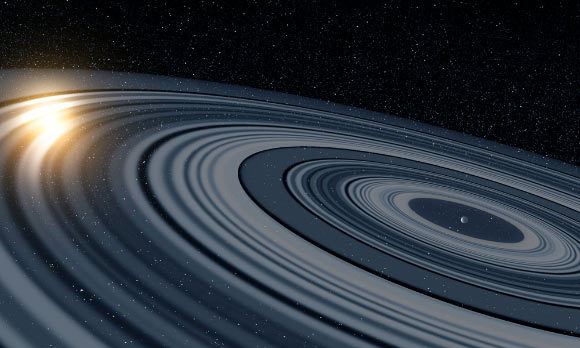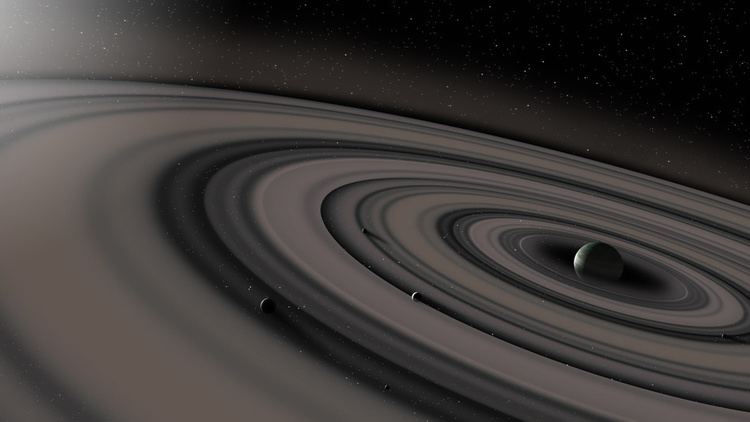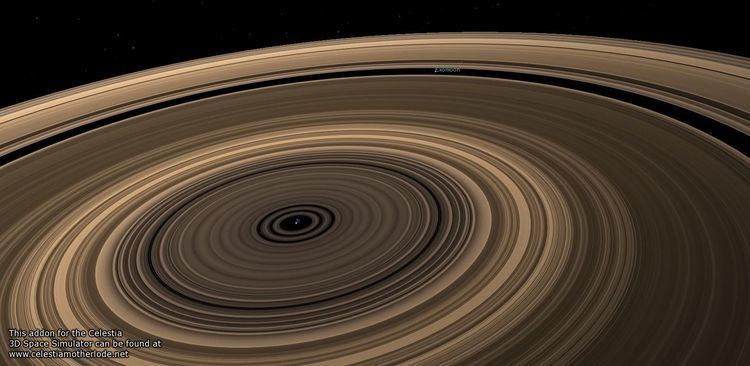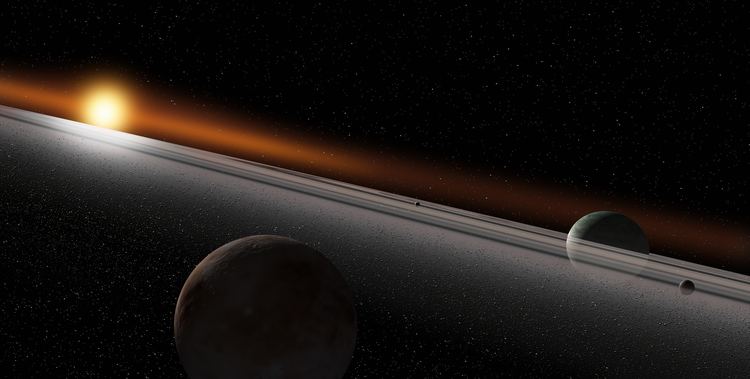Mass 1.79 × 10^30 kg (0.9 M☉) Constellation Centaurus | Magnitude 12.31 Apparent magnitude (V) 12.31 | |
 | ||
Similar J1407b, TrES‑2b, Gliese 436 b, 55 Cancri e, HD 106906 | ||
Unusual exoplanet with gigantic rings j1407b in space engine
1SWASP J140747.93-394542.6 (often abbreviated 1SWASP J140747 or J1407) is a star similar to the Sun located in the constellation of Centaurus at a distance of about 420 light years from Earth. A relatively young star, its age is estimated to be 16 million years, and its mass is about 90% that of the Sun's. The star has an apparent magnitude of 12.3 and requires a telescope to be seen. The star's name comes from the SuperWASP (Wide Angle Search for Planets) program and the star's RA/Dec.
Contents
- Unusual exoplanet with gigantic rings j1407b in space engine
- 1swasp j140747 93 394542 6 top 5 facts
- 1SWASP J14074793 3945426 b
- References

J1407 is probably orbited by at least one known body, 1SWASP J1407b (J1407b), thought to be either a large gas giant planet or a brown dwarf with an immense ring system.

1swasp j140747 93 394542 6 top 5 facts
1SWASP J140747.93-394542.6 b

The discovery of the J1407 system and its unusual eclipses were first reported by a team led by University of Rochester astronomer Eric Mamajek in 2012. The existence and parameters of the ring system around the substellar companion J1407b were deduced from the observation of a very long and complex eclipse of the previously anonymous star J1407 during a 56-day period during April and May 2007. The low-mass companion J1407b has been referred to as a "Saturn on steroids" or “Super Saturn” due to its massive system of circumplanetary rings with a radius of approximately 90 million km (0.6 AU). The orbital period of the ringed companion J1407b is estimated to be around a decade (constrained to 3.5 to 13.8 years), and its most probable mass is approximately 13 to 26 Jupiter masses, but with considerable uncertainty. The ringed body can be ruled out as being a star with mass of over 80 Jupiter masses at greater than 99% confidence. The ring system has an estimated mass similar to that of the Earth. A gap in the ring system at about 61 million km (0.4 AU) from its centre is considered to be indirect evidence of the existence of an exomoon with mass up to 0.8 Earth masses.

J1407b is the first exoplanet or brown dwarf discovered with a ring system by the transit method. A sequence of occultations of the star 1SWASP J140747.93-394542.6 occurred over a 56-day period in 2007. The pattern was consistent with that expected for the transit of a large system of multiple rings, associated with a substellar companion dubbed “J1407b”. The J1407b ring system has an outer radius of about 90 million km (about 640 times the one of Saturn’s rings). The team found cleared gaps in the rings, which indicate that satellites (“exomoons”) may have formed and accreted from the material orbiting J1407b. However, the young age of the stellar system (only about 16 million years) and the high mass of the ring system (roughly an Earth mass) are more consistent with it being a circumplanetary or protoexosatellite disk in the process of forming satellites, rather than a long-term stable ring system in an evolved planetary system (such as Saturn's rings).

From Earth's point of view, the ring system appears about 3.7 milliarcseconds across. For comparison, if it were the same distance from our solar system Saturn's ring system would be 0.006 milliarcseconds across.[1]

